Matador Network's Blog, page 440
July 28, 2022
11 Cancún Airbnbs for an Unforgettable Beach Vacation
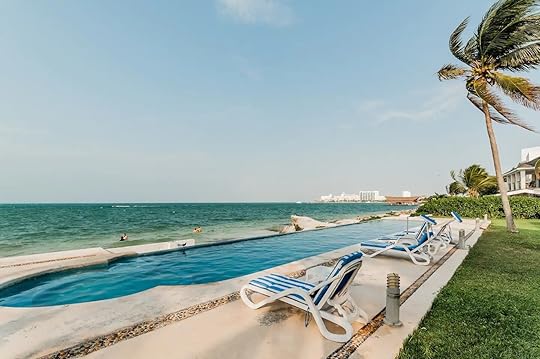
Aquamarine seas, powdery beaches, and an unlimited supply of tacos mean that Cancún never goes out of style. Mexico’s number one vacation destination has long been associated with all-inclusive hotels. But, Airbnb has transformed the Hotel Zone – or, the Zona Hotelera – into a destination that delivers all the luxuries of a 5-star resort with the comforts of home. Dive into our round-up and find the perfect Airbnb Cancún of your dreams.
We hope you love the Airbnb Cancún vacation rentals we recommend! Just so you know, Matador may collect a small commission from the links on this page if you decide to book a stay. Listed prices are accurate as of the time of publication.
Best overall Airbnb in Cancún, Yucatán PeninsulaVilla Dzul Ha – best location in Cancún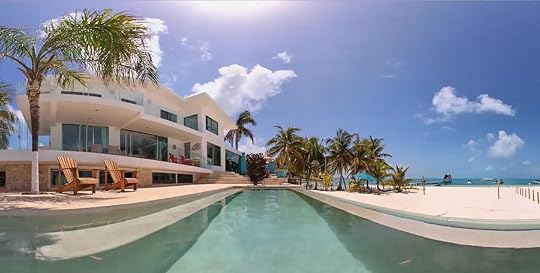
Photo: Airbnb
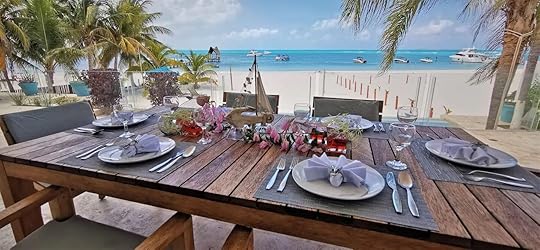
Photo: Airbnb
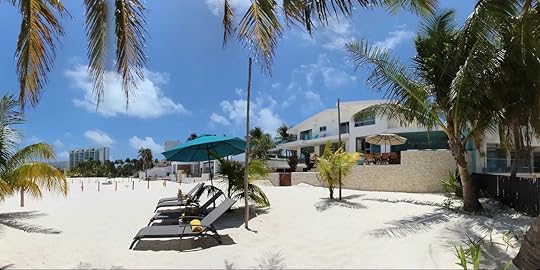
Photo: Airbnb
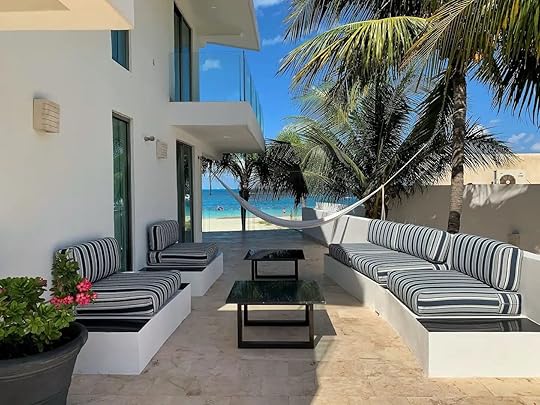
Photo: Airbnb
This immaculate villa sits within a gated community in the northernmost sector of the Zona Hotelera. Your closest beach is free of seaweed and is considered one of the best in the Yucatán. Interiors are clean and homely with the indulgence of a private swimming pool and the option to bring your pet along. Book this Cancún Airbnb with chef service on top and you can look forward to a true vacation without lifting a finger.
Sixteen guests, six bedrooms
Price: $1,865 per night
It’s well-documented fact that sandwiches taste better when someone else prepares it for you. These Cancún Airbnbs come with chef service, so you can spend all your time relaxing rather than prep cooking.
Villa Cenzontle in Cancún Hotel Zone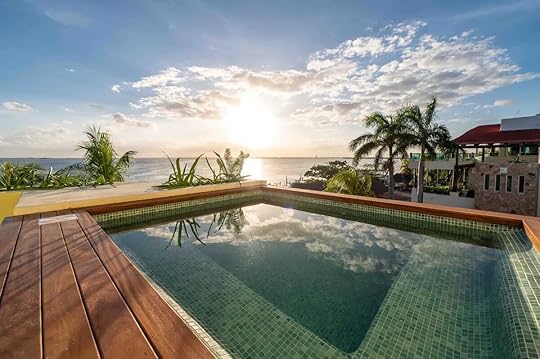
Photo: Airbnb

Photo: Airbnb
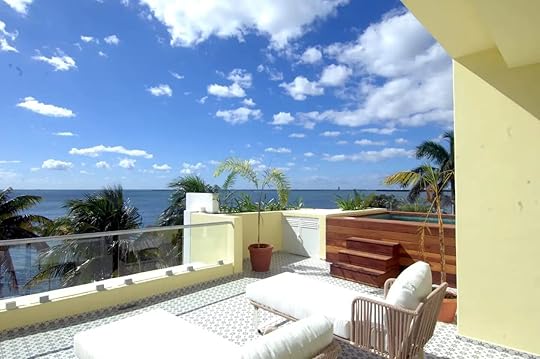
Photo: Airbnb
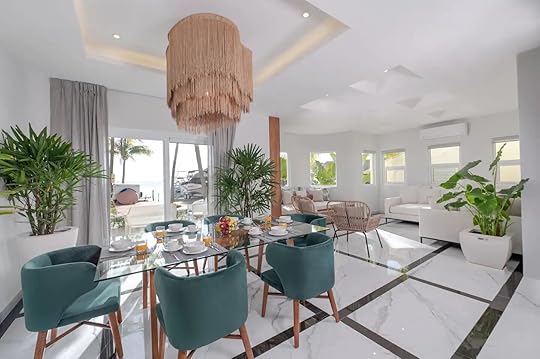
Photo: Airbnb
This beachside, three-story vacation home provides unparalleled views of the Caribbean Sea. Cool down in the private pool on the rooftop terrace and retreat to the reading nook when the temperatures soar. A daily breakfast is prepared and served on the premises and the host can arrange a chef to whip up lunches and dinners during your stay.
Ten guests, four bedrooms
Price: $480 per night
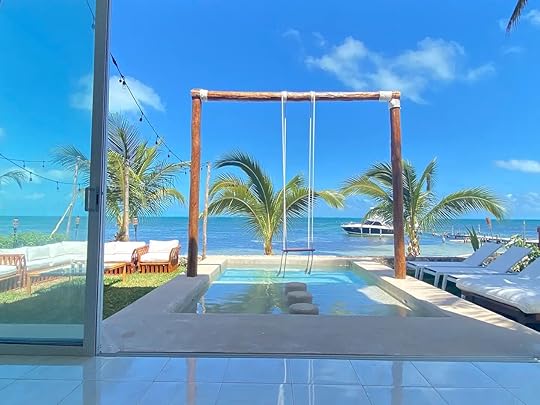
Photo: Airbnb
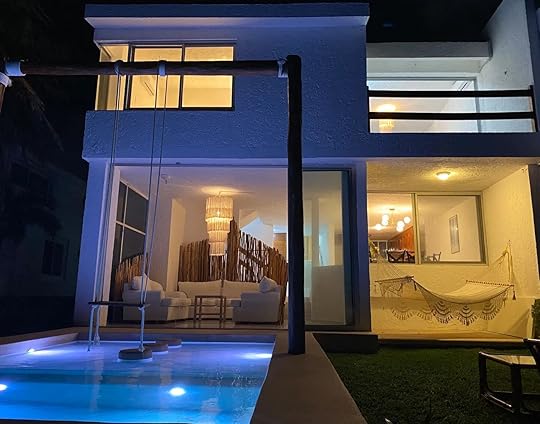
Photo: Airbnb
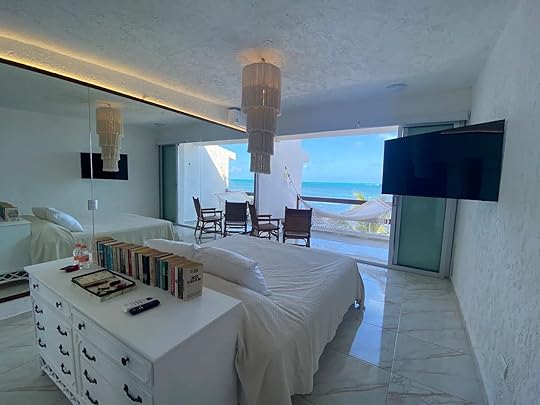
Photo: Airbnb
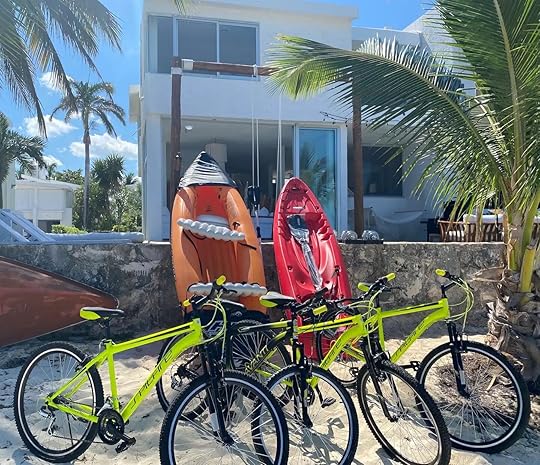
Photo: Airbnb
This luxurious villa runs over two levels and overlooks the ocean. The backyard swim space comes with a swing for added fun (and photo opportunities, of course) while the poolside seating lets you soak up the Mexican sunshine. The host of this Cancún Airbnb with a private chef works with a professional cook from the Grand Velas Resort who can provide three home-cooked meals a day for a reasonable fee. A paddleboard and kayak are at your disposal.
Fourteen guests, five bedrooms
Price: $970 per night
Taking a trip to Mexico? Check out Matador’s Mexico accommodations guides:The best Airbnbs in and around Mexico City’s historic center8 La Condesa Airbnbs to settle into Mexico City’s coolest neighborhood8 stunning Polanco Airbnbs in the city’s most international neighborhoodGrab Your Crew and Book These Oaxaca and CDMX Airbnbs for Dia de Los MuertosThese Top-Rated Tulum Airbnb Rentals Put You Right Near the BeachCancún Airbnbs on the beach
You’re visiting Cancún to hit the beach, so you might as well make it easy on yourself. These beachside Cancún Airbnbs are steps from the sand.
Luxury residence on the beach
Photo: Airbnb
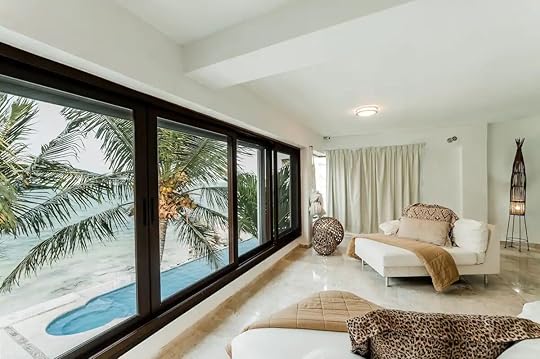
Photo: Airbnb
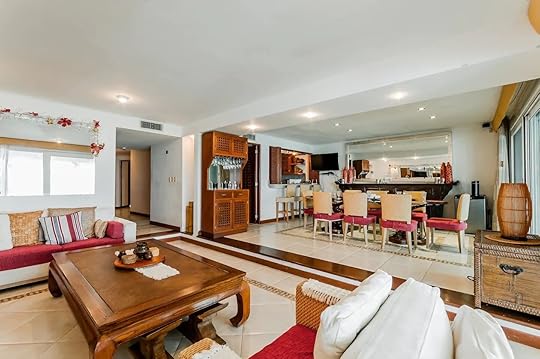
Photo: Airbnb
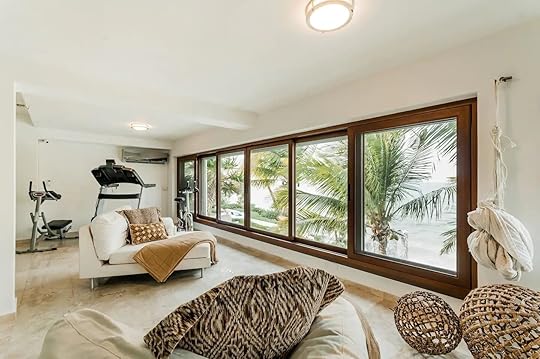
Photo: Airbnb
With uninterrupted views of the Caribbean Sea and Isla Mujeres, instant beach access, and a peaceful environment, this Cancún Airbnb on the beach will wash away all your worries. Three spacious bedrooms, cozy decor, and a fully-equipped kitchen present the experience of a genuine family home. Pack a snorkel to make the most of the crystal-clear water and remember to jump in the shared pool.
Eight guests, three bedrooms
Price: $440 per night
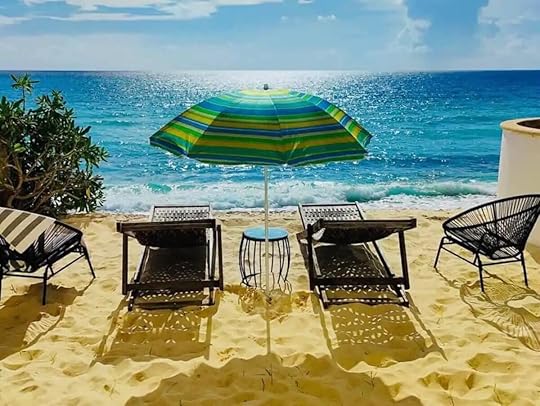
Photo: Airbnb
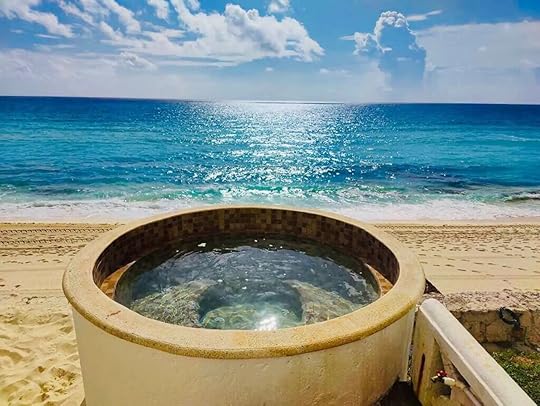
Photo: Airbnb
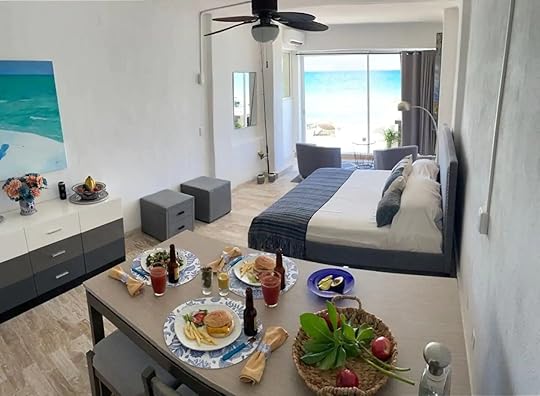
Photo: Airbnb

Photo: Airbnb
This beachfront Airbnb Cancún condo comes with direct access to the sand, a private plunge pool, and a grill. Two bedrooms and two bathrooms guarantee that all guests have sufficient space. Communal facilities at the resort include an infinity pool and restaurant. Situated off Kukulcan Boulevard, the property is convenient but away from the crowds of the middle Zona Hotelera neighborhood.
Five guests, two bedrooms
Price: $250 per night

Photo: Airbnb

Photo: Airbnb

Photo: Airbnb

Photo: Airbnb
Situated at the northern end of the Zona Hotelera, this luxurious Cancún Airbnb on the beach benefits from the tranquility of a gated estate. The rental has its own swimming pool and hot tub with immediate access to the semi-private beach. Interiors are light and airy with seven modern bathrooms ensuring that there are no morning squabbles.
Fourteen guests, six bedrooms
Price: $2,215 per night
Why share the cool waters with anyone outside your party? These Cancun Airbnbs with a private pool allow you to soak and swim to your heart’s content, no matter the time of day.
Stunning oceanfront luxury villa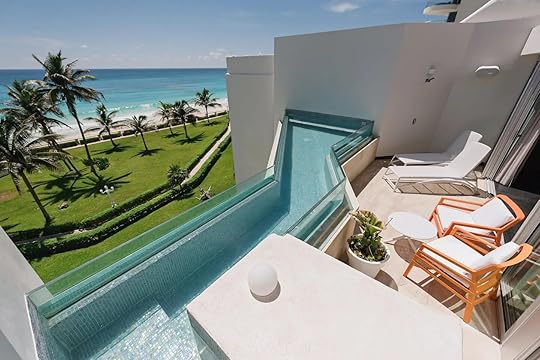
Photo: Airbnb
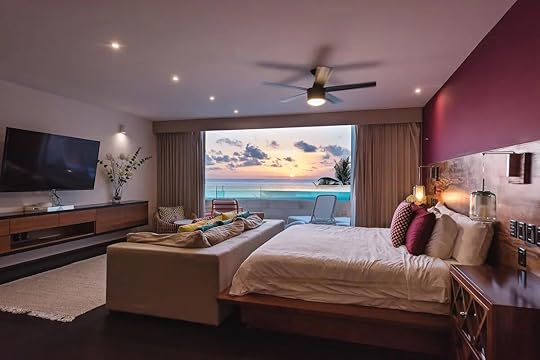
Photo: Airbnb
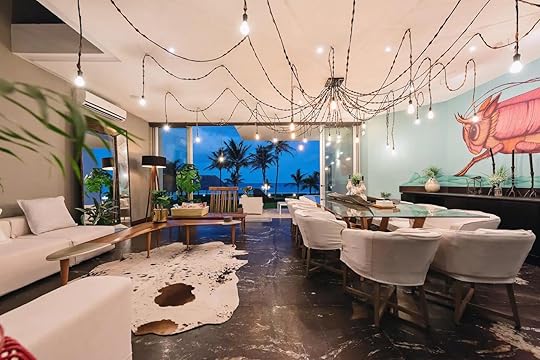
Photo: Airbnb
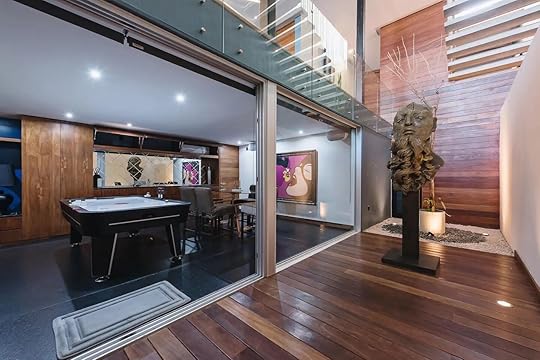
Photo: Airbnb
Bask in the glory of the ocean from this deluxe Airbnb in Cancún with a private pool. Fashionable interiors combine modern art with traditional elements while ample lounge and dining areas will appease sociable groups. Spread over three floors, the pool occupies the upper terrace while the ground level opens out into a backyard with a lawn.
Twelve guests, six bedrooms
Price: $1,450 per night

Photo: Airbnb
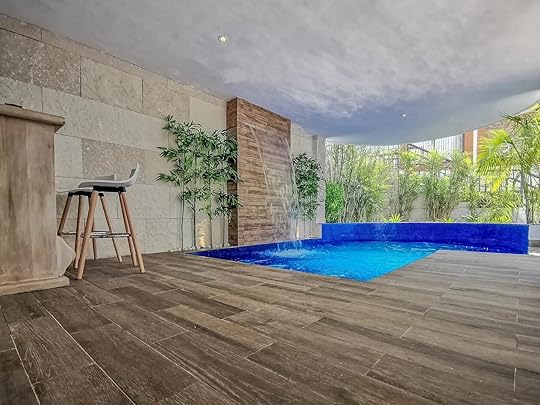
Photo: Airbnb

Photo: Airbnb
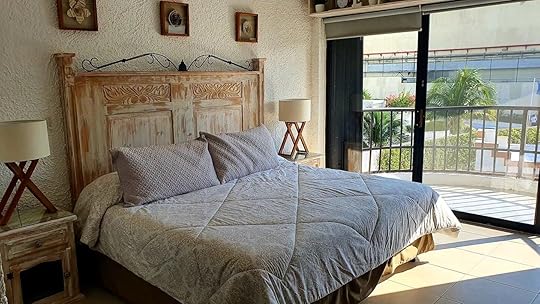
Photo: Airbnb
Your gorgeous Cancún Airbnb with a private pool is ornamented with lush greenery and waterfall elements to create a jungle escape. Bedrooms are appointed with handcrafted furniture and high-thread count linens to deliver supreme levels of comfort. Located in the beating heart of the Zona Hotelera, you’ve got beaches, restaurants, and tourist amenities directly on your doorstep.
Twelve guests, four bedrooms
Price: $445 per night

Photo: Airbnb

Photo: Airbnb
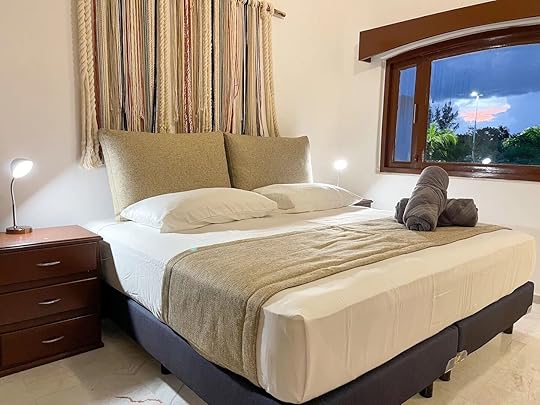
Photo: Airbnb

Photo: Airbnb
This knockout Airbnb in Cancún is the perfect family rental, with a spacious sun terrace with a pool, jet tub, hammocks, and a waterfront seating area. Rooms are furnished with regional art and craft pieces to add character. There’s a ping pong table to keep the boredom at bay and the host is on hand to organize tours, massages, and chef services. What’s more, you’ve got your own dock in case you fancy renting a boat.
Sixteen guests, five bedrooms
Price: $820 per night
Here’s a little known fact about Cancún Airbnbs: Some of them are located in all-inclusive resorts. These properties offer the security and familiarity of booking through Airbnb, with all the perks of a full-fledged resort.
One-bedroom all-inclusive Cancún beachfront resort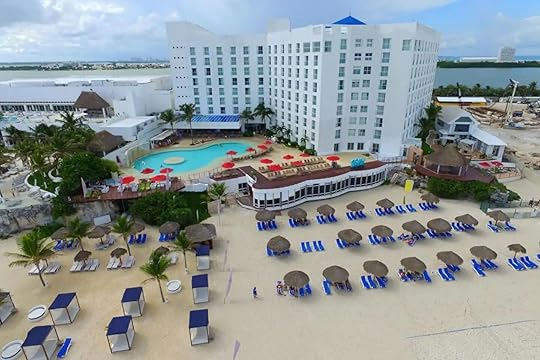
Photo: Airbnb

Photo: Airbnb

Photo: Airbnb
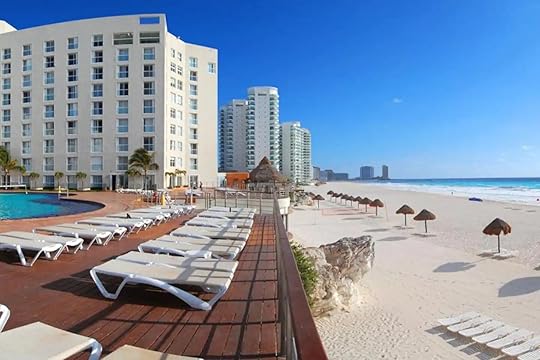
Photo: Airbnb
This all-inclusive Airbnb in Cancún grants access to a one-bedroom suite and communal facilities at the Sunset Marina Resort. The space includes a private hot tub with an ocean view. During your stay, you’ll receive full board and alcoholic beverages with the option to attend on-site yoga classes and enjoy unlimited use of non-motorized water sports equipment.
Six guests, one bedroom
Price: $220 per night

Photo: Airbnb
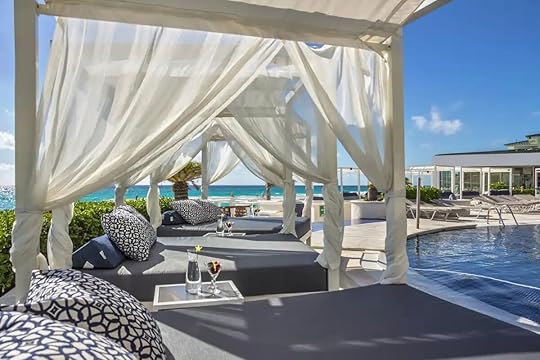
Photo: Airbnb

Photo: Airbnb

Photo: Airbnb
Rooms available when you book this all-inclusive Airbnb in Cancún come with the option of one king-size bed or two doubles. For additional living space and the convenience of a kitchenette, you can upgrade to the suite. Booking permits the use of the Sandos Resort including the oceanside swimming pool, meals in the restaurant, and discounted tours and activities. 
Three guests, one bedroom
Price: $75 per night
These Gorgeous Arctic Airbnbs Will Have You Planning a Trip Up North

Subzero temperatures aren’t bad when you’re holed up in a cabin with a mug of cocoa while the northern lights dance above. Since Airbnb revealed its Arctic stays category, it’s easier than ever to browse fairytale cabins and off-grid chalets surrounded by snow and ice – or the midnight sun if you prefer. Gather your thermals and whisk yourself away to one of these gorgeous and architecturally playful rentals from the Airbnb Arctic category.
Arctic Airbnbs in SwedenArctic Airbnbs in IcelandArctic Airbnbs in NorwayArctic Airbnbs in Svalbard, NorwayArctic Airbnbs in FinlandArctic Airbnbs in AlaskaWe hope you love the Arctic Airbnbs we recommend! Just so you know, Matador may collect a small commission from the links on this page if you decide to book a stay. Listed prices are accurate as of the time of publication.
Arctic Airbnbs in SwedenAurora Hut on the Torne River
Photo: Airbnb

Photo: Airbnb

Photo: Airbnb

Photo: Airbnb
Live out your Arctic fantasies at this remarkable igloo in Kiruna, Swedish Lapland – one of the best places to see the northern lights. Aurora Hut sits atop a thick blanket of snow and ice during the winter season (December-March). Meanwhile, visit during summer (June-August) and you’ll find yourself floating on the river. The transparent hut is equipped with a basic kitchen and eco-toilet while the complex has additional bathing facilities.
Two guests, one bedroom
Price: $325 per night

Photo: Airbnb

Photo: Airbnb

Photo: Airbnb

Photo: Airbnb
Located in a far-flung lava desert in the south of Iceland, this innovative glass cottage from the Airbnb Arctic category overlooks some of the largest volcanoes in the country. Snuggle up in the bed and cross your fingers for a sighting of the northern lights. The glass theme continues in the bathroom while an outdoor private hot tub adds even further luxury to this secluded escape.
Two guests, one bedroom
Price: $600 per night
Aska Modern Cabin
Matador’s guides to the best of Airbnb Categories:10 Remote, Off-The-Grid Airbnbs Where You Can Get Away From It AllThe 11 Most Beautiful Converted Churches You Can Stay in Around the World on AirbnbAirbnb Just Made Windmills a Category, and These 9 Have Us Planning a TripAirbnb Now Has a Towers Category. These 9 Will Climb Your Bucket ListAirbnb Launched a Tiny Homes Category, and We’re Already Planning Trips Around These 1111 Properties in Airbnb’s New OMG! Category You Won’t Believe Are Real

Photo: Airbnb

Photo: Airbnb

Photo: Airbnb
This one-of-a-kind deluxe cabin is set within a 300-year-old lava field with a fantastic view over Lake Mývatn in Reykjahlíðm, northeast Iceland. The hut is fully self-contained with a modern bathroom and a simple kitchenette. Floor-to-ceiling windows capitalize the scenery and bikes are available for rent during your stay.
Two guests, one bedroom
Price: $230 per night

Photo: Airbnb

Photo: Airbnb

Photo: Airbnb

Photo: Airbnb
Escape to Nónsteinn, western Iceland, where you have the Snæfellsjökull National Park right on your doorstep. This is one of two handcrafted self-contained cabins each with its own bathroom and kitchenette. The hut overlooks Kirkjufell Mountain while the beach is a short walk from the complex. As a working sheep farm, you can expect to share the space with livestock and friendly collies.
Two guests, one bedroom
Price: $160 per night

Photo: Airbnb

Photo: Airbnb

Photo: Airbnb

Photo: Airbnb
This pet-friendly private retreat from the Airbnb Arctic category is built on an island on the remote Fleinvær archipelago. Sleeping spaces are spread across four sleeping cabins and the tower house. Meanwhile, communal areas include a lounge, kitchen shack, and sauna. Pack your swimwear and seize the opportunity to take a dip in the Norwegian Sea. Units are available for individual rent in the case of couples or smaller parties.
Ten guests, five bedrooms
Price: $1,530 per night

Photo: Airbnb

Photo: Airbnb

Photo: Airbnb

Photo: Airbnb
This 20th-century schoolhouse has been transformed into an idyllic cabin in Norway’s coveted Lofoten district. Rustic interiors are warmed by wood burners while a solid foundation will keep you feeling snug in the thick of winter when the winds rise. The vacation home overlooks Haukland Beach where you can kayak during the summer months and – if luck’s on your side – catch sight of the Northern Lights in winter.
Seven guests, two bedrooms
Price: $160 per night
Book here

Photo: Airbnb

Photo: Airbnb

Photo: Airbnb

Photo: Airbnb
Get close to nature without fear of frostbite at this unique translucent Arctic camping dome in Gildeskål, Norway. A tactical gas oven and a heap of plush blankets will keep you toasty as you sleep beneath the glowing winter skies. The igloo rests on an isolated patch of the seashore and guarantees absolute privacy during your stay.
Two guests, one bedroom
Price: $200 per night

Photo: Airbnb

Photo: Airbnb

Photo: Airbnb

Photo: Airbnb
Renting this Longyearbyen cabin gives you a sense of what it’s like to live in Svalbard, one of the most isolated archipelagos in the world. Polar bears roam near the farm stay while the resident huskies are sure to make your stay all the more memorable. Come prepared for a true Svalbard experience: the “dry” bungalow is without running water and the bathroom is located outside the main cabin.
Eight guests, two bedrooms
Price: $140 per night

Photo: Airbnb

Photo: Airbnb

Photo: Airbnb

Photo: Airbnb
Slap-bang in the middle of the Kaldoaivi Wilderness Area, this ski-in/ski-out Arctic treehouse is about as remote as you’ll find in northern Finland. You’ve got a sauna for bathing, a fireplace for warmth, and a gas stove to prepare meals. But don’t expect cell coverage, Wi-Fi, or running water; this is off-grid living at its finest. Your booking includes return transfers via snowmobile or ATV. Dogs are welcome to share the adventure up north.
Six guests, two bedrooms
Price: $200 per night

Photo: Airbnb

Photo: Airbnb

Photo: Airbnb

Photo: Airbnb
Bask in the glory of Finish Lapland at this modern ski-in/ski-out chalet in Levi. The two-story rental is filled with natural light and has more than enough space to spread out, making it an ideal pick for families and small groups. After a day of hiking or skiing, warm up in the sauna or outdoor hot tub. Where better to catch the northern lights?
Seven guests, four bedrooms
Price: $125 per night

Photo: Airbnb

Photo: Airbnb

Photo: Airbnb
Check into an epic rental from the Airbnb Arctic category without the hassle of leaving the country at this Nenana, Alaska, dry log cabin. The bed is located in the loft where a strategic window offers a glimpse of the Denali peak while a trundle accommodates an additional guest or a couple of kids. Spend leisurely mornings with a coffee on the deck watching moose going about their day. 
Four guests, one bedroom (studio)
Price: $100 per night
6 Vineyards And Wineries That Make Texas Hill Country A Must-Visit Wine Destination

When many wine drinkers think about top-quality American wine regions, an elite group of West Coast destinations come to mind, including the Napa Valley, Sonoma County, and the Central Coast in California, along with the Willamette Valley in Oregon and the Walla Walla Valley in Washington. But savvy American wine enthusiasts know that excellent grapes can be grown and excellent bottles can be produced throughout the United States, including the dry climate of the Southwest. One less-obvious American wine region that deserves serious appreciation is the Hill Country of Central Texas. Texas Hill Country wineries are the best place to learn all about what wine in Texas has to offer.
The Texas Hill Country AVA (American Viticultural Area) covers 9 million acres of land north of San Antonio and west of Austin. The region is situated on top of the Edwards Plateau, resulting in a landscape of natural springs, grasslands, and rolling hills.
Thanks to this region’s long summers, sustained sunshine, and terroir with traces of limestone, the Texas Hill Country is a hotspot for the cultivation of southern European grape styles, like Sangiovese, Tempranillo, Rousanne, Cabernet Sauvignon, and Mourvèdre. Texas Hill Country wineries are doing European wine with a focus on hospitality, outdoor seating overlooking scenic views, and even a family-friendly atmosphere at some places.
For that reason, fans of European wines will find a lot to love about the Hill Country. But Texan winemakers are also eager to put their own spin on long standing wine traditions, making the Hill Country an exciting place for wine innovation and a region packed with charming tasting rooms, patios with views of the vines, and on-site food trucks and music venues. If you find yourself in Central Texas, be sure to check out these six popular Texas Hill Country wineries.
Texas Hill Country wineries to tryWilliam Chris Vineyards
Photo: William Chris Vineyards
Route 290, a stretch of highway that runs west from Austin, is an unofficial Hill Country wine trail, with dozens of wineries and vineyards located directly on and right off of this road. One of the most acclaimed Route 290 wineries can be found at William Chris Vineyards, where owners and winemakers Chris Brundrett and William Blackmon work hard to nurture their homegrown vines and to craft both single varietal wines and blended wines with elegant textures and well-balanced flavor dimensions. William Chris takes serious inspiration from European wine traditions, and they’re even one of the few wineries in the United States to use a concrete “Galileo” tank from Bordeaux, which allows for top-notch aging and fermentation.
William Chris’ beautiful property includes a working vineyard that’s available for tours, along with an airy, bright tasting room where visitors can sample William Chris wines with the guidance of tasting professionals and, in some cases, the winemakers themselves. The tasting room includes comfortable leather sofas and chairs, wide tables for onsite lunches curated by William Chris’ culinary team, and an outdoor patio space for those who prefer to enjoy their wine and snacks al fresco.
Where: 10352 U.S. Highway 290, Hye, TX 78635
Ab Astris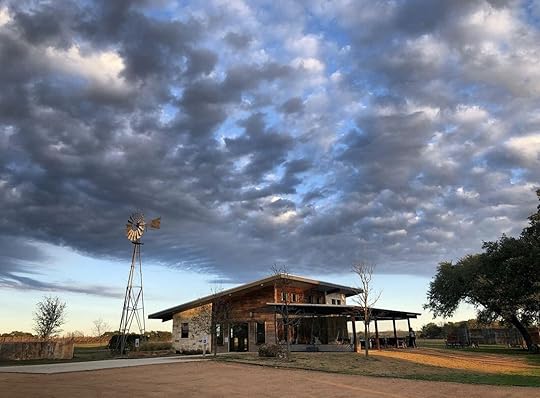
Photo: Ab Astris
Just west of Hye (and just off of Route 290), the small Hill Country town of Stonewall hosts a number of excellent wineries. One especially-noteworthy one is Ab Astris, a boutique vineyard that’s beloved for its blends and single varietals inspired by Southern French, Italian, and Portuguese styles. Cabernet Sauvignon, Tannat, Grenache, and Petit Sirah feature heavily in Ab Astris’ red wines, and their whites are strongly influenced by the Rhône Valley (their Stello blend, for instance, contains Roussanne, Clairette Blanche, Picpoul Blanc, and Marsanne, all grapes commonly grown in the Rhône). The result? Sophisticated and vibrant wines that pair wonderfully with food and are equally enjoyable on their own (perhaps while sitting on Ab Astris’ patio and overlooking the lush vineyard and scenic oak trees scattered throughout the property).
Guests can participate in guided tastings at Ab Astris, and while the winery doesn’t serve food, visitors are welcome to bring their own picnics to pair with any of Ab Astris’ wines by the glass or by the bottle.
Where: 320 Klein Road, Stonewall, TX 78671
Pedernales Cellars
Photo: Pedernales Cellars
An established presence in the Hill Country wine world since opening its doors in the 1990s, Pedernales Cellars in Stonewall takes full advantage of the bright sunshine and hot climate of Texas by focusing its wine production on Spanish and Southern French varietals. Their juicy, multilayered Tempranillos are much-loved by Hill Country wine drinkers, and their Rhône Valley-style Vioginiers deliver bright acidity and mellow stone-fruit flavors that shine through even when chilled, making it a perfect wine for a sweltering summer day in Texas. Their fruit-forward (but not sugary) rosés are also ideal options for warm weather.
Pedernales provides cellar tours and estate wine tastings for visitors, and they also regularly host special events open to the public, like grape-stomping parties and concerts by local bands. If guests get hungry, they can purchase cheese and charcuterie boards to snack on as they sip.
Where: 2916 Upper Albert Road, Stonewall, TX 78671
Spicewood Vineyards
Photo: Spicewood Vineyards
The beautiful grounds of Spicewood Vineyards in Spicewood, TX include 32 acres of active vineyards, along with a comfortable winery with a focus on Texas-style hospitality. Spicewood uses estate-grown and Texas-grown grapes to make aromatic Viogniers, peppery Tempranillos, as well as white blends and red blends.
At Spicewood, guests can relax on patio tables with plenty of shade from tree branches, or they’re welcome to hang out in the winery for guided tastings. Spicewood hosts food pop-ups from local trucks and vendors and regularly brings in bands for concerts, and when they launch new vintages, they frequently celebrate with lively parties. Kids and dogs are welcome at Spicewood, making this a perfect Hill Country destination for families.
Where: 1419 County Road 409, Spicewood, TX 78669
Duchman Family Winery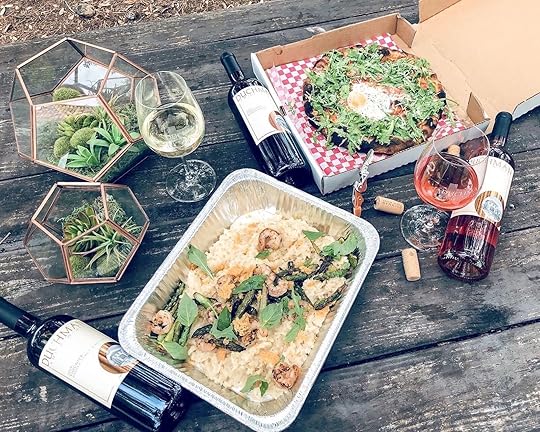
Photo: Duchman Family Winery
If you’re a fan of Sangiovese, Montepulciano, and other Italian wine varietals, then Duchman Family Winery in Driftwood, TX is the Hill Country spot for you. The Duchman team specializes in Italian-style wine making using 100 percent Texas-grown grapes, which, like many Italian vines, thrive in hot climates. Because they’re using Italy as a model, Duchman Family Winery emphasizes food friendliness in its wines, and their onsite Italian restaurant, Trattoria Lisina, is an ideal place to settle in with a Margherita pizza, a plate of homemade pasta, and a glass of Duchman wine.
Tastings and tours are offered at the Duchman tasting room, with tables available either indoors or outdoors. Duchman is a popular setting for private parties, but they also host public events like bingo nights, blind tasting competitions, and live music performances.
Where: 13308 Farm-To-Market Road 150, Driftwood, TX 78619
Bending Branch Winery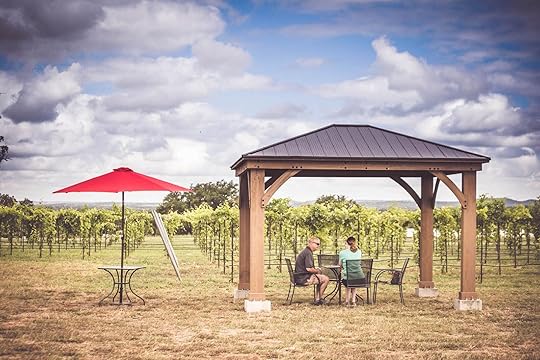
Photo: Bending Branch Winery
Bending Branch Winery in Comfort, TX proudly refers to their products as Next World Wines, in reference to the experimental techniques and innovations that its winemakers use to craft their vintages. Bending Branch uses cryo-maceration, in which the winemakers deep-freeze freshly harvested grapes to weaken the cell structures that contain flavors, tannins, and colors, which then makes it easier to draw out those qualities during the fermentation process, and another technique called thermoflash (a European heating-and-cooling process that speeds up fermentation). It’s one of very few Texas wineries dabbling in these cutting-edge winemaking methods.
The Bending Branch property features a tasting room and plenty of outdoor seating, and the space is pet-friendly. Also, keep an eye on the Bending Branch event calendar, as live music and special bottle tastings happen regularly here.
Where: 142 Lindner Branch Trail, Comfort, TX 78013 
To Experience Nashville’s Luxe Side, Check Into The Joseph

Although commonly linked with honky-tonk bars, fried foods, and bachelorette parties, a more luxurious side of Nashville is quickly picking up steam. Anchoring this shift is The Joseph Nashville, a 297-room hotel in the SoBro neighborhood.
The Joseph is only four blocks south of the nightlife scene on Broadway, but it feels like a world away with a spa; rooftop pool; world-class art collection; and high-end, Italian-inspired restaurant. The first sign this is a luxury hotel greets you at the porte-cochere where a London cab parked in front of a living greenery wall flaunts Burberry upholstery. Adjacent is an LED display with installations paired to the time of day.
We hope you love The Joseph Nashville. Just so you know, Matador may collect a small commission from the links on this page if you decide to book a stay.
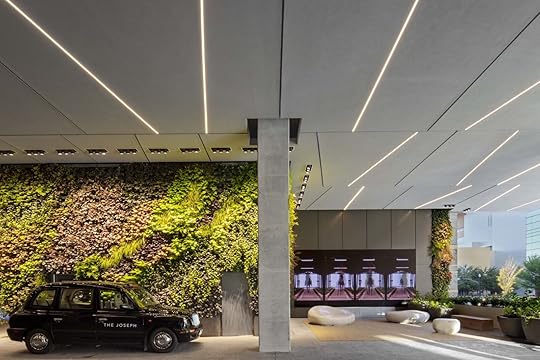
Photo: The Joseph

Photo: The Joseph

Photo: The Joseph
“We cater to people who want to experience Nashville but don’t necessarily want to be in the craze of it all,” says Nicky See, the hotel’s director of marketing.
However, owner Joel Pizzuti — a Vanderbilt University grad — didn’t shy away from Nashville’s music roots. In fact, he chose to subtly embrace them in the design. For example, a communal table in the lobby and guestroom headboards are crafted from burl wood, a popular material for guitar-making. And there are chained-embroidery rugs (the same technique used to make rhinestone-studded “nudie suits”) and the leather paneling on the check-in desk is by Lucchese, a famed bootmaker with musician clients.
The hotel is also an ode to Pizzuti’s family. He named the restaurant, Yolan, after his grandmother Yolanda (her nickname was Yolan); and woven into the interior design are 1,100 works of art, part of an impressive collection begun by his father Ron, an art collector.

Photo: The Joseph
“They’ve collected one of the top private art collections in the world,” says See. “Many pieces are by living artists. You might walk past a piece many times before you notice it, or you might see it right away. Joe loves that — it’s subconsciously filling your mind.”
For example, a painting by Jackie Saccoccio — the first piece you see upon entering — changes with the amount of light filtering in through the lobby’s wall of windows.
To further build out the interior design, the team at Miami-based Arquitectonica traveled to Italy for inspiration, which resulted in choices like Italian marble (throughout the lobby).
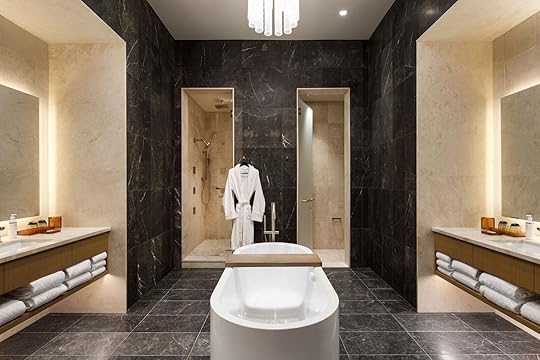
Photo: The Joseph

Photo: The Joseph
In each of the suites is a turntable with a curated collection of albums, another nod to Nashville’s music scene.
“All the guestrooms are inviting and luxurious in their design,” says Ricardo Lutchman, director of rooms at The Joseph, a Luxury Collection Hotel. “Materials such as copper, oak, and brown leathers complete a palette and aesthetic that feels local, warm, and sophisticated.”

Photo: The Joseph

Photo: The Joseph
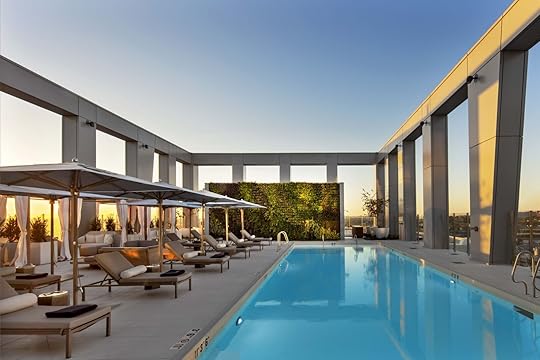
Photo: The Joseph
Seven living greenery walls are on the property, including two at the rooftop saltwater pool where buttery, flaky croissants and other pastries are served in the mornings at Denim Bar and a full lunch and dinner menu later on.
Wellness abounds — and not just at the pool.
“Both travelers and our local community seek spaces dedicated to unwinding and escaping the everyday stressors and stimulation of urban life. High above the hum of downtown Nashville’s busy streets, The Joseph’s 21st floor offers amenities that provide a healing and rejuvenating environment,” says Ricardo Lutchman, director of rooms at The Joseph.
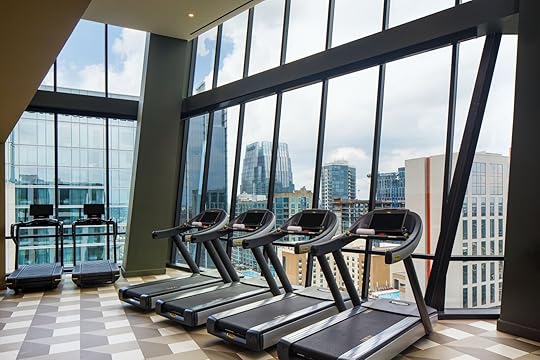
Photo: The Joseph
At the 21st-floor fitness studio — featuring the same unobstructed view found at the hotel’s Presidential Suite — are Peloton bikes, free weights, kettlebells, and more. Yoga al-fresco classes on the 8th-floor terrace (in summer) or at the spa (during winter) are in partnership with E+ROSE, a local plant-based wellness company, serving fresh-pressed juice and a healthy breakfast after.
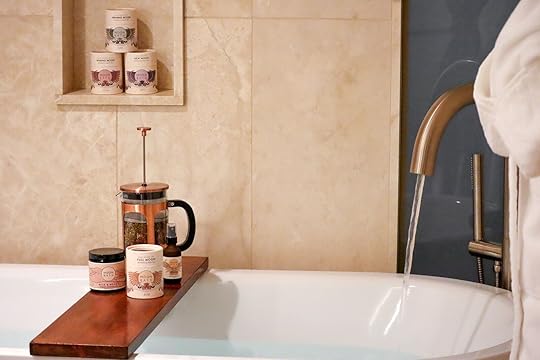
Photo: The Joseph
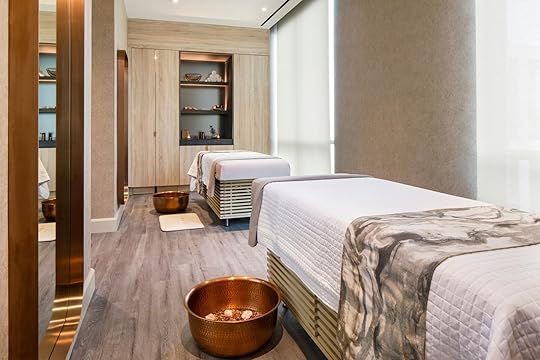
Photo: The Joseph

Photo: The Joseph
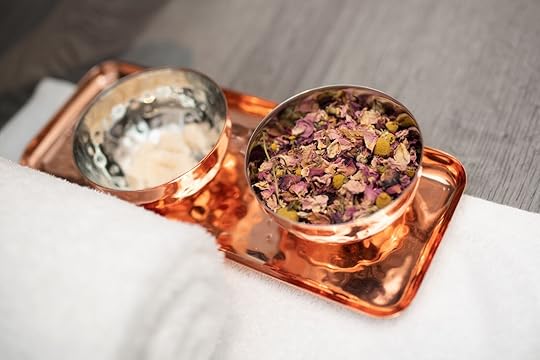
Photo: The Joseph
Then, at Rose Spa, there are six treatment rooms where each service begins with a signature foot bath in a copper bowl, featuring a salt scrub rinsed away with rose petals, hibiscus flowers, and Egyptian chamomile. Treatments end with a calming sound healing session using a Tibetan singing bowl.
“Our signature Rose Indulgence experience harnesses healing powers of rose quartz and pure Damascena rose oil,” says Jo Hyde, the director of the spa. “A chakra-balancing back treatment soothes the body into relaxation, followed by a scalp massage with revitalizing meridian tapping techniques to relieve body tension. Acupressure with hot poultices and rose-quartz crystals restores the skin’s naturally glowing appearance, while a garnet scrub protects and energizes, and a cooling jade mask helps reduce the appearance of fine lines.”
Another popular offering is the recently launched “Summer Traveler’s Relief” treatment, an anti-inflammatory service to improve circulation and reduce inflammation resulting from long periods of sitting during road trips or on long flights in the summer heat.
“Featuring calming elements such as CBD, menthol, camphor, aloe and a beet-cayenne extract,” says Hyde, “[there’s] a gentle exfoliation of the feet and lower legs while receiving a tension-relieving hand massage. Legs are treated with a CBD cream and masked with a stimulating Moor mud, and the treatment ends with a deep, soothing foot and leg massage to increase circulation and relieve soreness.”
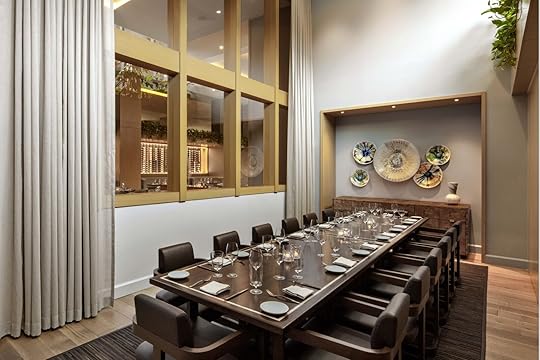
Photo: The Joseph
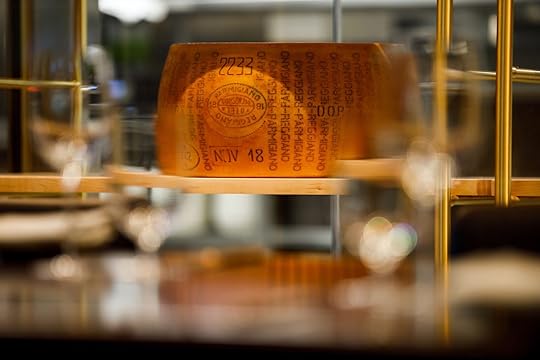
Photo: The Joseph

Photo: The Joseph
At Yolan, the ground-floor restaurant, with James Beard Award winner and Michelin-starred chef Tony Mantuano at the helm, the menu cycles through regions of Italy, with Puglia being one recent example. Meals are served in the sunken dining room.
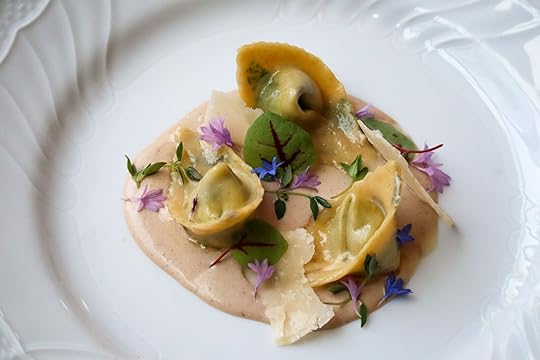
Photo: The Joseph

Photo: The Joseph
One-hundred-and-eighty-pound wheels of Parmigiano-Reggiano cheese are on full display, a bread board with multiple selections replaces the traditional “bread basket,” and a custom olive-oil blend was crafted in Tuscany just for the hotel.

Photo: The Joseph

Photo: The Joseph
This attention to artisan quality extends to the drinks. Many liqueurs in The Joseph’s cocktail program are made in-house. For example, a whisky folding in hickory smoke and washed in lamb fat — exclusive to the hotel and produced by George Dickel Whisky in Normandy, Tennessee — is used in the bar’s “Palmer Farms Old Fashioned.”
Whether it’s a massage at the spa, waking up with croissants and a dip in the rooftop saltwater pool, or enjoying yoga on the 8th-floor terrace, this luxury hotel blends art with wellness in a very memorable way. 
July 27, 2022
This Airbnb in the South of France Is Straight Out of the Town in ‘beauty and the Beast’
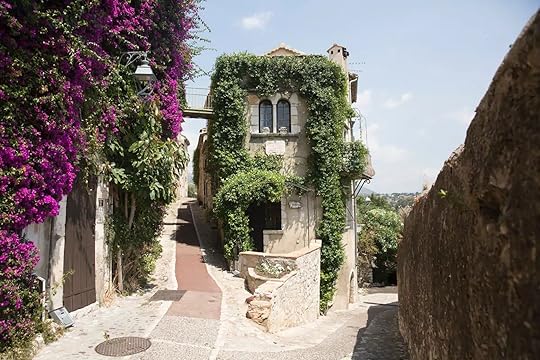
In the south of France, away from the feeling of hyper-tourism, you’ll find the dreamy village of Saint-Paul-de-Vence. Set high in the hills, this town is sure to spark a sense of whimsy with lush greenery that meets the sea. And there, you’ll find an Airbnb that seems straight out of the small village in The Beauty and the Beast that’s perfect for four guests who want to live out their Belle fantasy.
@wheretofindme the most magical Airbnb in the South of France#provence #southoffrance #airbnbfinds #airbnb #francetiktok #francetravel ♬ Married Life – Michael Giacchino
We hope you love the stay we recommend! Just so you know, Matador may collect a small commission from the links on this page if you decide to book a stay.
This two-bedroom, two-bathroom apartment was the home of the legendary French poet, writer, and screenwriter Jacques Prévert in the 1940s. The home is a restoration from the 12th century that has kept its charm.
A private entrance leads you inside, where you’ll find mesmerizing dark wood beams, natural lighting, and a gorgeous fireplace. The window sill seating is the perfect place to have your coffee in the morning.
A stained glass doorway will take you to the kitchen, where whites, muted greens, and more natural lighting warm up the quaint space. The dining table seats four.
Each bedroom is made up with “super king” beds with separate bedding that makes it easy to separate them into four smaller beds for guests who want their own space. Then, make your way to the bathroom to find a rainfall shower and an enormous soaking tub. The second bedroom has an adjoined bathroom with another soaking tub.
When you’re not enjoying the inside of your quaint temporary home, be sure to step outside and take in the lush scenery from the patio. 
This New Campground Site Helps You Find the Best Spot No Matter What You’re Looking For
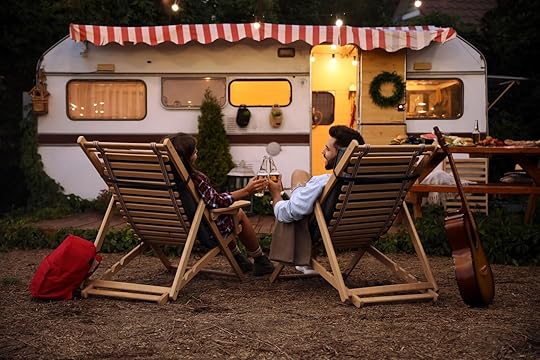
It’s camping season, and whether you’re making your way to a forest, national park, or the beach, you’ll want to ensure that when you arrive, your campground will have everything you need. A new website, CampgroundViews.com, can help you narrow down the search for the best camping spots.
On the site, users can search 16,000 campgrounds throughout the United States. There are 360-degree virtual tours and a comprehensive searchable database to make the best choice for your next adventure. The database is also easy to use. First, input where you’re trying to visit. Then, narrow the search by how many miles you’re willing to travel to your destination. You can refine your search by whether pets are allowed, WiFi availability, electric availability, water hookups and more, making it a good choice for digital nomads looking to work on the go, travelers new to camping, or RV travel. The database is free, but users need member access to use the 360-degree virtual tour software. After using the site, users can seamlessly head to the booking website for the specific campground.
“Finding the right campsite, especially in popular areas near National Parks or other hotspots, can often be the most challenging part of the camping experience because you don’t know if you’ll be next to a dumpster or bathroom, or what the view might look like,” said Mark Koep, founder and CEO of CampgroundViews.com in a press release. “Campers love our virtual tours because they offer the unique ability to see the whole site before arriving so they can make informed decisions about where they want to stay and what to expect when they get there.”
Memberships are available in tiers. The Road Tripper for $3.99 gives you access to the site for a week, making it a good choice if you’re only going on one or two trips or like to plan in advance. The Journey Camper for $54.99 gives you access for six months, and the Annual Camper package is $99 for the year. 
The 9 Best Uncrowded State Parks in Arkansas
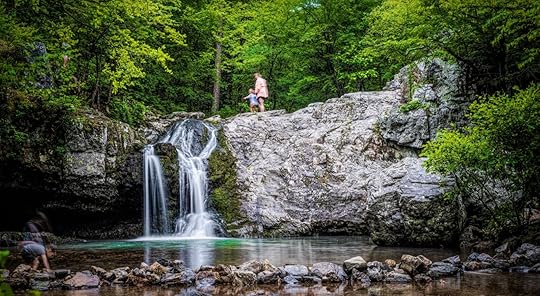
Arkansas has seven sites managed by the National Park Service. Hot Springs National Park is the only official national park, but there are three National Historic Sites (The Bill Clinton Birthplace, Central High School, and Fort Smith), plus Arkansas Post National Memorial, Pea Ridge National Military Park, and the well-known Buffalo National River.
These preserved sites showcase some of the most impressive scenery in the Natural State, but they also attract crowds as some of the top tourist destinations in the state. Fortunately, if you’re interested in getting off the beaten track and exploring some of the smaller protected areas, Arkansas has 52 state parks with a wide variety of terrain, activities, and cultural experiences to fill your days.
With free admission, Arkansas state parks have great recreational opportunities, well-maintained facilities, and acres of green spaces. Ideal for families or outdoor enthusiasts, there’s something for everyone from digging for diamonds to camping under the stars to hiking to waterfalls and mountain biking through forests. Each of Arkansas’ state parks has something unique to offer, but if you’re unsure where to start, check out the top Arkansas state parks below to help you plan your next visit to the Natural State.
Petit Jean State Park
Photo: M.Curtis/Shutterstock
The idea for creating the Arkansas State Parks system was sparked in 1907 atop Petit Jean Mountain, which became the state’s first park in 1923. It encompasses an abundance of unmarred woods, ravines, streams, springs, spectacular views, and interesting ecological formations. The park’s early development was primarily done by the Civilian Conservation Corp between 1933 and 1938.
Petit Jean has three national Historic Districts with more than 80 buildings, structures, trails, and bridges still in use. Today, the park offers modern and rustic accommodations, including 33 cabins, a 24-room lodge, and 125 campsites for tents and RVs. In addition to a full-service restaurant serving classic Southern cuisine, the park has amenities such as swimming pools, playgrounds, ball courts, and an amphitheater.
The view from the lodge and restaurant looks out over the stunning Cedar Creek Canyon, making it easy to understand why the land was the inspiration for the state’s park system.
Crater of Diamonds State Park
Photo: Arkansas Department of Parks, Heritage, and Tourism
Just as its name implies, Crater of Diamonds State Park is the eroded surface of a volcanic crater. But more interesting to the average person, perhaps, is the fact that it’s full of diamonds and other rocks and minerals such as amethyst, garnet, jasper, agate, and quartz.
Visitors can search the 37-acre plowed field and keep any treasure they find. Since the park opened in 1972, more than 33,100 diamonds have been discovered. One of the latest diamonds in the US, a 40.23-carat nicknamed Uncle Sam, was found in 1924. The Diamond Discovery Center is an educational station in the park where visitors can learn more about how to search and the history of the area’s unique geology.
The park also has campsites, a lunchtime cafe, and Diamond Springs Water Park, perfect for cooling off after a day of digging.
Devil’s Den State Park
Photo: Gunnar Rathbun/Shutterstock
Devil’s Den State Park derives a great deal of its identity from the rustic design of its historic cabins, as well as the rugged and largely undeveloped terrain. In the Ozark Mountains, the Arkansas state park is on the highest and most severely eroded of the three plateaus that form the mountain system. Lee Creek, which runs through the park, cuts through layers of sandstone, shale, and limestone, exposing the geographic features to the public. You may also recognize it from the third season of HBO’s crime drama True Detective, much of which was filmed in the park.
Devil’s Den has hiking, mountain biking, horseback riding, and backpacking trails that lead to caves, crevices, and bluff overlooks. Unfortunately, the caves in the vast sandstone crevice area are now closed to help stop the spread of white-nose syndrome in bats. That’s a good thing, as Arkansas caves are a habitat for numerous species, including the endangered Ozark big-eared bat.
Developed in the 1930s, the park is one of the most intact Civilian Conservation Corps parks in the US. Native stone and wood are prevalent in all the CCC-made structures in the park, especially trails, cabins, and scenic overlooks. It’s also one of the most popular Arkansas state parks for fishing and boating, and has 135 campsites that are usually easy to snag.
Village Creek State Park
Photo: Arkansas Department of Parks, Heritage, and Tourism
In Arkansas’ upper Delta region, the unique element of Village Creek State Park is the Andy Dye-designed, 27-hole championship golf course set on the park’s forested hills. The nearly 7,000-acre preserved area, located about an hour from the Mississippi River, also has 33 miles of multi-use trails for hikers, mountain bikers, and horseback riders.
The equestrian campground and stables have horse stalls with wash bays and other conveniences to help riders unwind after a day in the saddle. Guests can also stay in modern cabins with full kitchens and satellite television or campgrounds with bathhouses, and a small museum tells the history and geography of the park. It’s one of the best Arkansas State Parks if you’re with a mixed group of some outdoorsy folks who want to hike, and some folks who like to golf, relax on a patio chair, and otherwise have their outdoor experiences be a little more upscale.
Hobbs State Park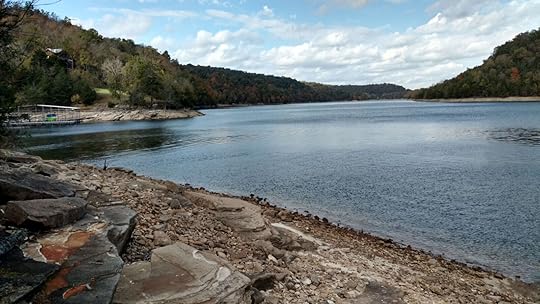
Photo: Alexander Lewandowski/Shutterstock
Hobbs State Park near Bentonville is the largest of the Arkansas State Parks at more than 12,000 acres. So there’s plenty to do regardless of what outdoor activity you prefer. But it’s perhaps best known for it’s 40 miles of mountain biking trails, particularly the trails considered part of the Monument Trail System. Most mountain bikers probably already know Arkansas is a top spot for singletrack in the US, and a major highlight is the eight-mile Karst Trail.
It’s an intermediate, mostly cross-country trail that goes past some of the park’s best scenery. It’s an intermediate, mostly cross-country trail that goes past some of the parks best scenery. There are also bike-in campsites, and it’s pretty close to the more advanced Slaughter Pen Trails, in case you crush the blue/advanced blue trails at Hobbs without breaking a sweat.
Lake Catherine State Park
Photo: Kurtis Sutley/Shutterstock
Arkansas may not be the first state you think of when imagining lush forest, but visiting Catherine Lake State Park may change your mind. Lake Catherine is home to Falls Creek Falls, a super-popular swimming hole and series of falls along a river. The water is almost tropical-blue, and there are 20 rentable cabins tucked into the park’s acreage in case you want to do a little Arkansas state park camping for a quick getaway without roughing it too much.
This is one of the must-visit Arkansas State parks for equestrians (or casual horse fans) as the park offers daily tours through the forest and along the river. The trails are pretty shady, so it can be pleasant even when it feels a bit toasty outside.
Lake Catherine State Park is fairly close to Hot Springs National Park, so it makes a good add-on if the national park starts getting too crowded in the afternoon.
DeGray Lake Resort State Park
Photo: Arkansas State Parks
Located on the shores of DeGray Lake just minutes from the popular tourist town of Hot Springs, the lodging and amenities at DeGray Lake Resort State Park are definitely more resort-oriented than what you would typically expect from a state park. The park’s 94-room lodge and convention center has a large swimming pool and on-site restaurant, and the whole park is on an island accessed by a causeway from the mainland.
Visitors looking for sporting fun can take advantage of an 18-hole championship golf course, pro shop, disc golf course, and tennis courts. Outdoorsy folks can hit the hiking trails, take a guided horseback ride, go fishing, and camp at one of the 113 campsites, most of which are surrounded by shade trees. It’s more like a hotel than a park.
Pinnacle Mountain State Park
Photo: David7/Shutterstock
Minutes from Arkansas’ capital city of Little Rock is the iconic Pinnacle Mountain State Park. Hiking to the cone-shaped top of Pinnacle Mountain is a must-do for an incredible view (and bragging rights, too). Two trails lead to the summit. Both are strenuous but the east trail is somewhat more rugged, crossing several boulder fields. There are more than 40 miles of hiking and mountain biking trails for all experience levels.
Mount Magazine State Park
Photo: Arkansas State Parks
Mount Magazine State Park, which includes the state’s highest point at 2,753 feet above sea level, is all about the views. Every room in the park’s lodge, which includes a swimming pool, fitness center, and game room, looks out to the Petit Jean River Valley and Blue Mountain Lake below. There are also 13 bookable cabins with the same view. Adventures here range from hiking and biking to rock climbing, hang gliding, and horseback riding.
Arkansas State Parks near Hot Springs National Park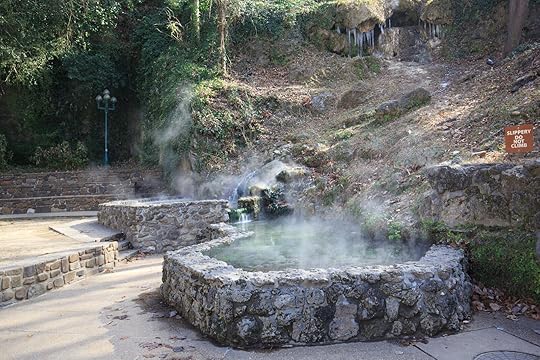
Photo: All Stock Photos/Shutterstock
The closest state parks to Hot Springs National Park are Lake Catherine (13 miles), DeGray Lake Resort State Park (28 miles), Lake Ouachita (32 miles), and Jenkins Ferry Battleground State Park (48 miles).
However, if it’s physical hot springs you’re after, rather than Hot Springs National Park, there are a few Arkansas state parks near hot springs, both natural and developed. There are developed hot springs bathhouses in the town of Hot Springs (not to be confused with the national park of the same name), and the town of Eureka Springs has nearly 60 natural springs. There are also a few natural springs around Bentonville.
Camping at Arkansas state parks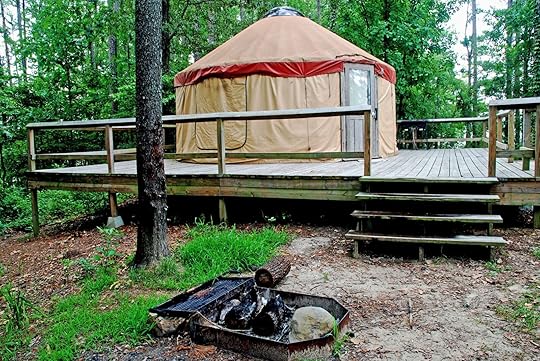
Photo: Warren Price Photography>/Shutterstock
Good news for campers interested in the state — camping at Arkansas state park is fairly easy to do and rarely crowded, unlike some state parks in more popular “outdoorsy” states. Arkansas has 52 state parks, and fortunately, there’s a helpful website to help you figure out your lodging plans. You can pitch a tent at these 33 state parks, or rent a cabin or yurt for a slightly less rustic Arkansas state park camping experience at these 12 state parks. Arkansas also has plenty of private campgrounds, including KOAs with pools and restaurants, plus two national forests (Ouachita National Forest and Ozark-St. Francis National Forest) where you can dispersed camp just about anywhere. 
Best Bourbon Street bars in NOLA
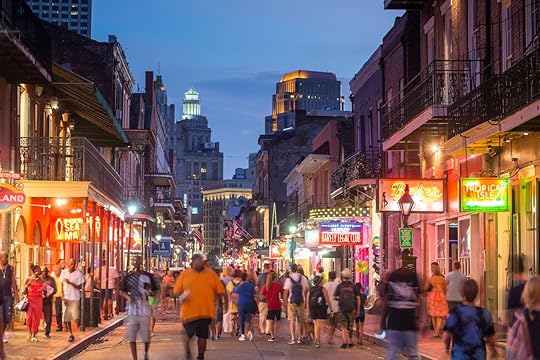
New Orleans is, in every way, the city that most embraces that high-low bar life. Not just in Louisiana but in the whole United States. You can drink at a gilded cocktail haven where storied classic cocktails were invented, then stumble outside for a hurricane cocktail consumed right there on the street — yes, it’s legal to drink on the street here, which is obvious as soon as you arrive. While almost all New Orleans bars embrace the rowdy lifestyle, nothing quite exemplifies this dichotomy like Bourbon Street, which is smack in the middle New Orleans’ French Quarter.
This French Quarter is both the city’s most famous and its oldest neighborhood, while New Orleans Bourbon Street is the main draw for partiers. It’s lined with strip clubs, dives, and live music spots. Some are worth your time, many others are not, but the street itself is something to experience. Bourbon Street was first laid out in 1721 and is named after the royal French Bourbon family. It stretches the 13 blocks between Canal Street and Esplanade Avenue. Some choose to approach Bourbon Street with history in mind and dine and drink exclusively at centuries-old establishments. Others choose the bars with the loudest bands. Both have plenty of options to choose from.
Regardless of how you look at it, though, you’re doing Bourbon Street wrong if you’re only going to one bar. Bars on Bourbon Street are crowded close together, making it easy to bar hop all night long. Take advantage of being able to walk place to place with a drink in hand. These are the 14 bars on Bourbon Street that you must go to at least once.
Quick note on selection: Only bars physically located on Bourbon Street, not the broader French Quarter, were considered. Since this is a town with plenty drinking history and passion for beverages, there will surely be some strong opinions about what is left off. These are simply the most essential Bourbon Street bars to visit — feel free to argue with us, but only after we’ve had a Hand Grenade.
1. Tropical Isle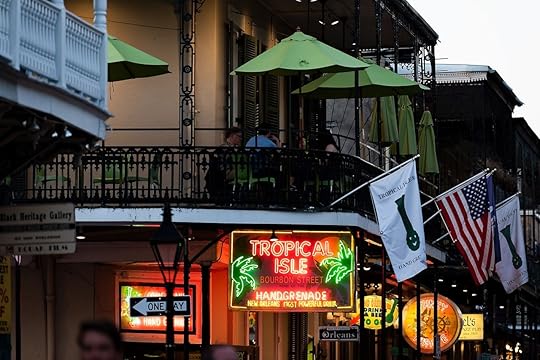
Photo: Kristi Blokhin/Shutterstock
Other than the Hurricane, NOLA’s most famous oversized and overly strong drink is the Hand Grenade. There’s only one chain of bars where you can legally get a true Hand Grenade (seriously, it’s trademarked and aggressively policed) and that’s Tropical Isle. The bar’s tagline is, “Where the fun begins and memories last forever,” but do yourself a favor and only have one Hand Grenade if you want to keep those memories. There’s a livestreaming webcam at the bar on the corner of Bourbon and Orleans, so you can show the world all of your great Bourbon Street decisions.
Locations: (Original) 600 Bourbon Street, (Bourbon) 721 Bourbon Street, (Bayou Club and Music Bar) 610 Bourbon Street, and (Little Tropical Isle) 435 Bourbon Street
2. Funky 544Think New York’s famous disco club Studio 54, but with an extra “4” and a distinct NOLA clientele. There’s a raised stage for regular live music (rhythm and blues is proudly highlighted on the bar’s entryway sign), and the drinks are intended to keep you dancing. You’ve got to find something to do with all the energy from those sweet cocktails, after all.
Where: 544 Bourbon St, New Orleans, LA 70130
3. The Beach on Bourbon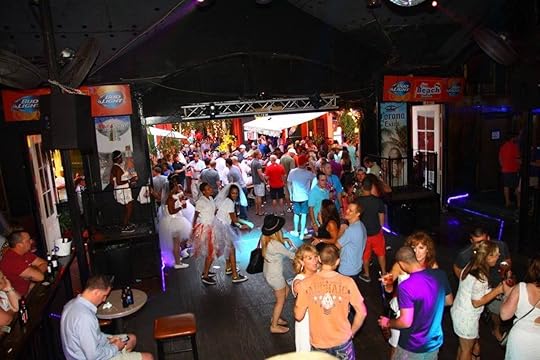
Photo: The Beach On Bourbon/Facebook
Not a literal beach, but New Orleans is one of those places where you can turn a place into whatever you want it to be. The Beach on Bourbon claims to have the largest dance floor out of all the bars on Bourbon Street. If you’re feeling like catching the vibe without dealing with the crowd of people dancing downstairs, head up to the VIP balcony section on the second floor. The Beach on Bourbon is also a place to catch a sports game on one of the multiple TVs. Come prepared on game days, because New Orleans is very much a sports town.
Where: 227 Bourbon St, New Orleans, LA 70130
4. Bourbon Pub and ParadeOpen 10 AM to 3 AM, Bourbon Pub and Parade is a gay bar that’s been open since 1974. Downstairs is the “pub” part while upstairs is the “parade.” There are events and themes every night, including karaoke, drag shows, and Throwback Tuesdays with hits from the 80s and 90s. Screens stream music videos all night long on Fridays and Saturdays.
Where: 801 Bourbon St, New Orleans, LA 7011
5. Bourbon O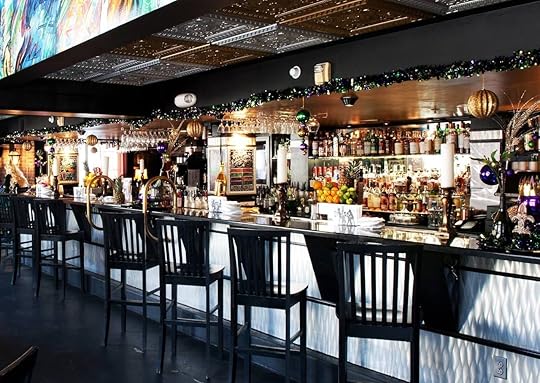
Photo: Bourbon “O”/Facebook
Get away from the cheap beer and cocktails made with sweet mixers for a bit at Bourbon O. It started using fresh-squeezed citrus and house-made ingredients in 2013, and the quality shows to this day. There is an impressive whiskey list and a healthy list of classic cocktails. This means that you’ll likely be paying more for the drinks than you will at any other bars along Bourbon Street, but it’s worth it. Live jazz music starts every night at 8 PM.
Where: 730 Bourbon St, New Orleans, LA 70116
6. Famous DoorOpened in the 1930s by a boxing promoter who wanted to copy a Manhattan nightclub, the Famous Door quickly became known as the spot to go for New Orleans jazz. Its musical reputation lives on with cover bands that regularly fill the playbill, proving it’s still a fun bar to hit for music, dancing, and drinks.
Where: 339 Bourbon St, New Orleans, LA 70130
7. Saints and Sinners
Photo: Saints and Sinners/Facebook
Channing Tatum’s bar Saints and Sinners has a lot less of a Magic Mike atmosphere than you may be hoping for, but it’s still worth a visit. It’s part bar, part restaurant, and an all-around enjoyable experience. It’s styled after old red-light district prostitute houses and burlesque halls (complete with red velvet), and a portion of the profits are donated to charities around the world.
Where: 627 Bourbon St, New Orleans, LA 70130
8. Maison BourbonMaison Bourbon offers live jazz shows, a rarity on Bourbon Street. In fact, it’s one of just two jazz bars on Bourbon, and calls itself the only “Dixieland Jazz Club” in the French Quarter. There’s no cover charge, and a cute courtyard in the rear of the club, where guests can drink and socialize in the open air. Refreshingly casual on the otherwise rowdy Bourbon Street, music lovers will find refuge at Maison Bourbon.
Where: 641 Bourbon St, New Orleans, LA 70130
More like thisIndulgence in New Orleans: A guide to 7 classic desserts9. Lafitte’s Blacksmith Shop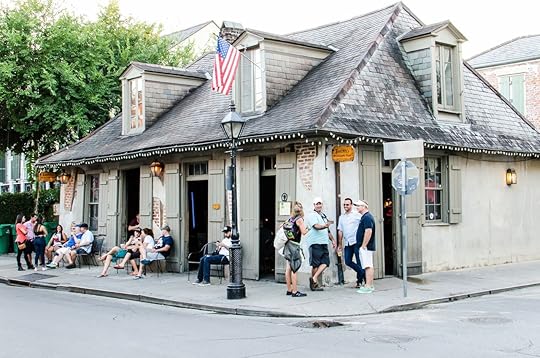
Photo: Andriy Blokhin/Shutterstock
Lafitte’s Blacksmith Shop is allegedly the oldest building to house a bar in the country. The name comes from Jean Lafitte, a privateer and slave trader who, according to legend, used the building as a storehouse in the early 1800s. Today, it’s a dim and dank drinking hole. Take a trip into the past and order a beer or a simple mixed drink in a plastic cup. Be ready to adjust your eyes, though, as you’ll be drinking by candlelight.
Where: 941 Bourbon St, New Orleans, LA 70116
10. OzThere’s no shortage of strip clubs on Bourbon Street and in New Orleans in general. The vast majority of those only have women on stage. Not so at Oz. Oz is a gay dance club with live strip shows, a balcony bar, and nightly events like drag shows and comedy shows. It’s also open 24/7.
Where: 800 Bourbon St, New Orleans, LA 70116
11. Old Absinthe House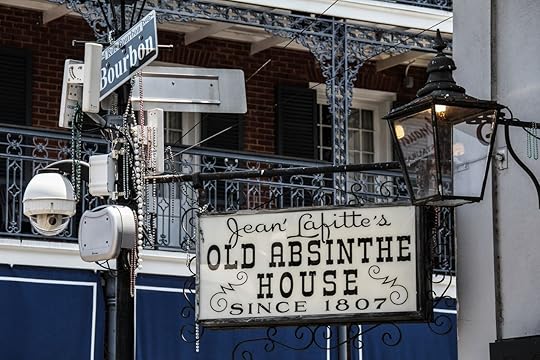
Photo: Atomazul/Shutterstock
The Old Absinthe House has been around since 1807. It, Lafitte’s Blacksmith Shop, has a connection to privateer Jean Lafitte. According to legend, the bar is where Lafitte and Andrew Jackson negotiated a treaty to join forces against the British in the Battle of New Orleans during the War of 1812. There’s no record of what they drank, but the deal worked. The drink to get here is the signature Absinthe Frappe, which was invented in 1874 and quickly became a favorite among writers like Oscar Wilde and Mark Twain.
Location: 240 Bourbon St, New Orleans, LA 70112
12. Fritzel’s European Jazz PubSince 1969, Fritzel’s European Jazz Pub has been inviting jazz players and jazz lovers from around the world. The food might not be anything to write home about and the drinks can be hit or miss, but you will stay for the live music. Just keep in mind it can get crowded during popular sets.
Where: 733 Bourbon Street, New Orleans, LA 70116
13. Cats Meow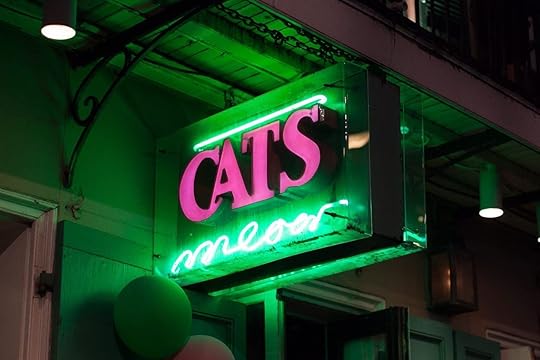
Photo: Cats Meow/Facebook
The Cats Meow has been around since the 1990s, and it’s become a karaoke institution. You make the music here — or someone else can, and this includes famous stops from the likes of Miley Cyrus, Charles Barkley, Seal, Weird Al Yankovic, Stormy Daniels, and more. Go early for the three-for-one happy hour offered every day from noon to 8 PM, which is just enough to get you through any bad singers.
Where: 701 Bourbon Street, New Orleans, LA 70116
14. Bourbon BandstandStop by to see the band B Street Benny. Bourbon Bandstand has live music or a DJ every night, as well as a regular happy hour and drink specials on the upper balcony bar. It’s rowdy both day and night, and the music is always set on “the hits.” Luckily, there’s plenty of room on the dance floor to show off all of your moves.
Where: 441 Bourbon Street, New Orleans, LA 70130
Why is Bourbon Street so famous?Bourbon Street is famous because it’s concerned the birth place of jazz music. Iconic musicians such as Jelly Roll Morton frequented the jazz clubs on Bourbon Street, and there are still many jazz clubs lining this street where the crowds are boisterous and the music is loud. Today, Bourbon Street is just as famous for raucous partying. Crowds from the bars spill out into the street, shops sells frozen drinks that you can sip while you walk, musicians play on the side walk, and groups of friends dance in the street. Drinking outdoors and while on the move is probably one of the main qualities that makes Bourbon Street such a popular and iconic destination.
Is Bourbon Street safe at night?Yes, Bourbon Street is safe. However, it’s important to be aware that people on Bourbon Street are rowdy. The drinks are abundant and flowing, and people go there specifically to let loose and release their inhibitions. You might find yourself avoiding groups how looked too drunk, but those people are easy to spot. It’s probably also smart to keep your wallet in a secure place, like you would in any other crowded destination. People are also throwing beads from the balconies so just be sure you don’t get hit in the head.
What is the best part of Bourbon Street?Upper Bourbon is widely considered the best part of Bourbon Street. This is area where bachelor and bachelorette parties congregate around a large concentration of bars and strip clubs. You’ll also find plenty of small bars dedicated to selling Hurricanes and Hand Grenades to thirsty party people to take away on their adventures. Karaoke is another popular activity in this section of Bourbon Street. 
A version of this article about bars in Bourbon Street, New Orleans, was previously published on February 7, 2019, and was updated on February 13, 2020 and January 31, 2022.
More like thisBudget Travel17 Free or Cheap Activities in New Orleans and Tips for a Budget-Friendly TripThis Water Bottle Ensures You Always Have Clean Water, No Matter Where You Travel
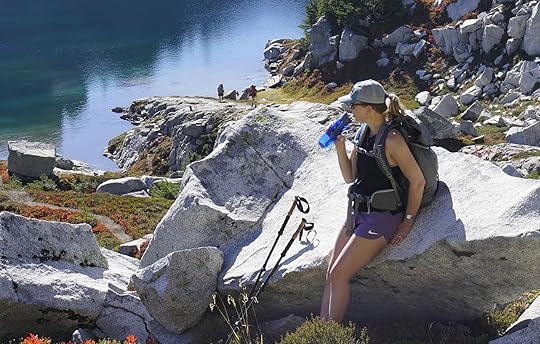
According to alarming new research, humans buy one million plastic water bottles every minute. And less than one-third of those are recycled. Without diving too deep into the environmental concerns surrounding this statistic, it’s apparent that we as travelers need to find a better solution than popping open a plastic bottle whenever we’re thirsty while abroad.
Many travelers, myself included, carry a refillable water bottle. But even the most thermo-cooled and tightly sealed water bottle doesn’t solve the most pressing issue surrounding staying hydrated abroad: what to do when the tap water isn’t safe to drink. And finding potable water in public in some countries can be nearly impossible.
Enter the Sawyer Bottle Water Filtration System, a new travel water bottle that dropped in 2022. At its core, the Sawyer bottle combines a standard water bottle with a backpacking water filter — the type that you’d bring along on a multi-day camping trip to make stream water safe and clean enough to drink. The long and short of it is that the bottle lets you fill up from any source and know the water is clean, filtered, and healthy.
We hope you love the Sawyer Bottle Water Filtration System! Just so you know, Matador may collect a small commission from the links on this page if you decide to buy a bottle. Listed prices are accurate as of the time of publication.
Sawyer Bottle Water Filtration System specsThis bottle is basically a standard, BPA-free water bottle with the Sawyer Mini filter inside it. If you’ve filtered water from a stream while camping, you already have a basic understanding of how the filtration system works. The bottle’s inside filter will last for about 10,000 gallons and attaches to the suction straw connected to the lid. The filter’s pores are no larger than .1 micron, which the company claims is small enough to remove 99.99999 percent of bacteria and diseases in water, including salmonella and cholera. It also claims to remove 100 percent of microplastics, so you won’t be drinking any of the microscopic bits of plastics that crowd our oceans.
“The filter can make tap water safe to drink domestically and internationally,” Travis Avery, Sawyer’s Marketing Director, told me via email. “It is a very simple scoop-and-drink system that filters out all of the harmful pathogens and microplastics from the water as you draw through the straw.”
Since the filter is attached to the straw, the actual filtration happens when you suck through the attached straw, rather than having it filtered as soon as it enters the bottle. It’s great for functionality, but removing the lid can be awkward and you’ll have a strain of gadgets attached to it when you’re filling up. I felt the gaze of those behind me in line when I stopped to fill up at airport bottle fill stations.
Also included in the packages is a cleaning plunger to backwash the filter, which keeps it as fresh and functional as possible. It’s usable both as a travel bottle when touring internationally or in the backcountry as a means to filter stream and river water.
Sawyer Bottle Water Filtration System field test: Mexico, Chicago, and Israel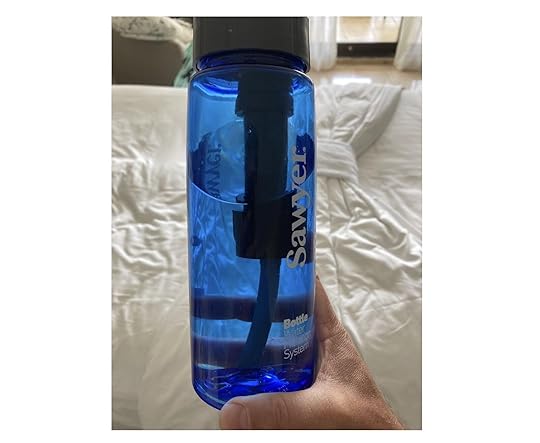
The bottle with tap water in Puerto Vallarta Mexico. Photo: Tim Wenger
The first place I took my Sawyer Bottle Water Filtration System bottle was Puerto Vallarta, Mexico. Tap water in Mexico is not drinkable in most places, and I admit I was nervous to fill the bottle in my hotel room and trust it to catch whatever might be lurking in the water. But I eased myself into it, filling half the bottle with tap water and half the bottle with bottled water for the first few days, thinking that if I at least cut down on the plastic bottles I was using, it was better than doing nothing.
Three days in I felt great, both physically and with a mental state buoyed by my seeming ability to take a calculated health risk in stride.
Still healthy, I upped the ante to a full bottle of tap water. I drank it, though I spaced it out over the course of several hours. I won’t claim that it tasted great, but I felt fine, and I decided to blame the slight indigestion I felt that night on the ceviche I had for dinner.
The next day, I drank two full bottles. I survived, thrived, and avoided dehydration and plastic waste throughout an afternoon of walking through town and an evening hanging by the pool at the hotel. I continued this practice for the remainder of my trip. Arriving home in Colorado after a week of filtering tap water through the Sawyer bottle, I appeared to be no worse for the wear.
A few weeks later I brought the bottle to Chicago. This test proved much easier to swallow from the moment I landed, and the Sawyer bottle passed with flying colors. I then spent a week in Israel with it, which sounds daring, but the tap water there is drinkable and I found myself at times wishing that I had a larger bottle without a filter that held enough water for a full day of touring. Still, I was glad I had the safety net of the filter.
Any downsides?Filling up quickly is essential when moving through airports or going about a busy day on the road. The biggest issue with this Sawyer bottle mostly related to filling up, as the screw-on lid needs to perfectly align with the threads so it doesn’t leak while drinking. I encountered this several times when I was in a hurry and hadn’t stopped to check if it was secure. The lid screws on even if it’s not perfect, so it can be confusing at first, but it just takes a bit of practice.
I also noticed that air pressure caused tiny drops of water to escape from the flow hole on the lid during takeoff on planes. A few times, I felt drops of water on my leg as the plane lifted off the ground, and then looked down and saw tiny bubbles coming from the lid of my water bottle. I never figured out exactly what caused this to happen, but with some experimenting, I did learn that it can be solved by gently loosening the lid before takeoff, relieving the air pressure on the water inside the bottle.
Sawyer Bottle Water Filtration System: Yes or no?After three weeks of travel with the Sawyer Bottle Water Filtration System, I was quite satisfied with its performance. I had no issues with sickness and the bottle packs easily into the side cup holder on most travel backpacks. The bottle is not the most convenient to open and refill, and I hope that any future update to its design addresses the issue with the cap. It’s also worth remembering that you’ll need to refill the bottle once or twice over the course of a full day of activities, as it only holds 24 ounces of water (Sawyer does sell a 34 oz water bottle, as well).
That, though, is the beauty of the Sawyer Bottle Water Filtration System – it eliminates the worry of having to stop and buy water halfway through the day, or carry around a backpack full of plastic bottles. For international travel to places with questionable water quality, the peace of mind (and fresh-filtered water) the Sawyer bottle provides is a welcome step forward for sustainability and convenience. 
Buy Sawyer Bottle Water Filtration System
Buy just the Sawyer Mini filter for your own bottle
More like thisTechnology + GearTortuga Setout 45L Is the Best Travel Backpack for Your MoneyTravelers on Reddit Share the Most Overrated National Parks, and They Have a Point
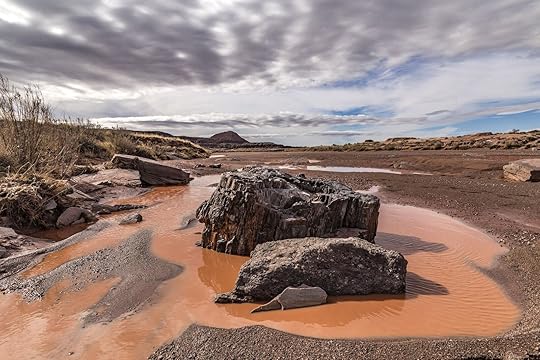
The United States has 63 official national parks, plus another 360 various national historic sites, national seashores, national monuments, and more managed by the US park service. They’re generally gorgeous places, showcasing some of the most beautiful parts of America. But hey, beauty is in the eye of the beholder, and some beholders aren’t a fan of everything they see.
A few similar threads from national park fans on Reddit asked travelers to name which they think are the most overrated national parks. For some, the parks are overrated because of how much they’re hyped. For others, their appearance on lists of overrated national parks is due more to size or crowds — or, in some cases, the huge amounts of mosquitos.
These are some of the most interesting thoughts on US national parks, though many of them are based on bad experiences with crowds in parks like Yosemite, Yellowstone, and Zion, rather than anything negative about the park itself. Of course, for every negative comment below, there are hundreds of threads of fans touting how much they love the space. Don’t let one opinion (or one funny comment) deter you from visiting America’s shared protected spaces and wild lands.
Keep reading to the end to see which park appeared most frequently among travelers’ opinions on the most overrated national parks in the system (though almost everyone still acknowledge the importance of protecting it).
Not a fan of Bryce Canyon’s uphill hikes…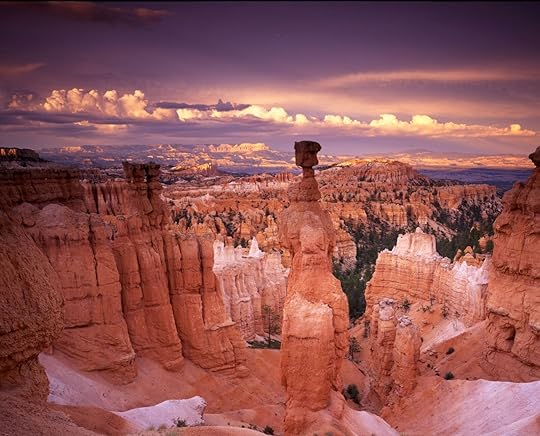
Photo: Bryce Canyon National Park/Public Domain
“I’ve been to 34 National Parks… Bryce Canyon is by far the most overrated National Park with Capitol Reef a few hours East on Scenic Hwy 12 being the most underrated. I think it’s the nearly 9000 foot elevation of Bryce that makes visitors not think clearly… It is basically a small, eroded cliff face that you can see from the overlooks in less than an hour. Yes, hiking down among the hoodoos is amazing but hiking back up, at that altitude, is horrible.” – Ramillerf1
Yosemite is a little too big….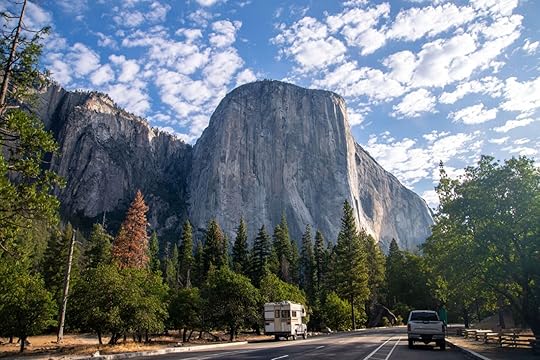
Photo: lu sea/Shutterstock
“Yosemite!!! We just visited on Labor Day and man what a disappointment. The shuttles were not working, which I think contributed the most to our disappointment. We really wanted to do a hike, but due to parking issues, it would’ve taken us hours just to walk to the start of the trail. I am also not a fan of the one way direction loop in the valley: we missed our turn once and had to do a loop.” – Chemical_cat18
Death Valley > Joshua Tree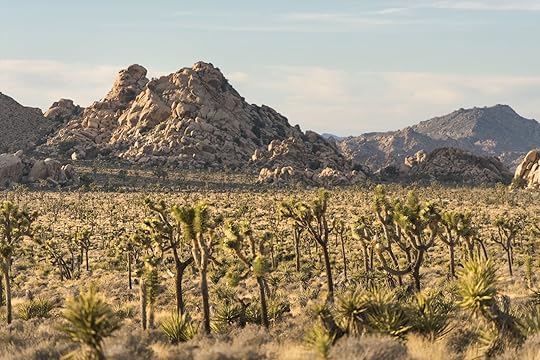
Photo: Joshua Tree National ParkBrad Sutton/Public Domain
“There were a few that I was expecting to end up higher on my personal list than they did. For me the largest discrepancy between reputation/expectation and reality of my experience was Joshua Tree NP. It’s cool, and I enjoyed it. But a full day was sufficient to see it and I don’t feel the need to hit it up again unless I happen to be in the area. I thought it was like a cut-sized Death Valley.” – McMarmot1
Chopped-up wood chunks…
Photo: Petrified Forest National Park/Jacob Holgerson/Public Domain
“Petrified Forest National Park. Visited there this summer. I was very underwhelmed. In my mind the trees were petrified and standing. It was basically a bunch of chopped up petrified wood chunks in piles.” – GhostMan74
Boring old bathhouses…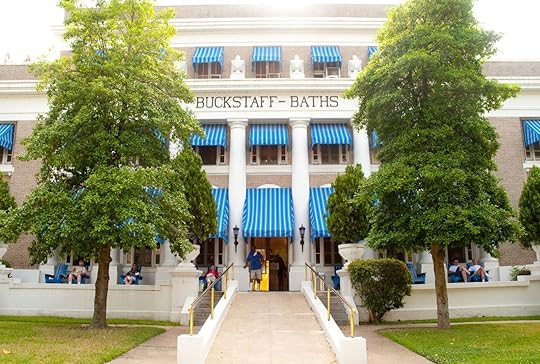
Photo: Zach Frank/Shutterstock
“Hot Springs was the most boring NP I’ve ever been to. National parks shouldn’t be centered around man made objects like those weird bathhouses.” – bundlemeup
Well, the rocks are nice…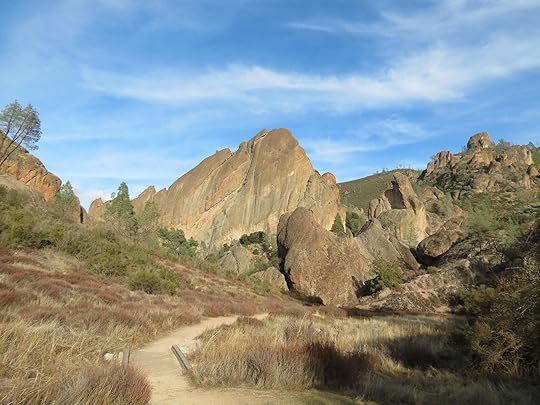
Photo: Pinnacles National Park/Emily Novack/Public Domain
“Although I have had great experiences in all the national parks I’ve visited, a park that I found to be not as worth visiting as all the others was Pinnacles. There were some nice rock formations and a small cave to visit, but in comparison I thought some national monuments were more interesting (Craters of the Moon, Grand Staircase-Escalante).” – MrChamise
No cell service, but good fruit….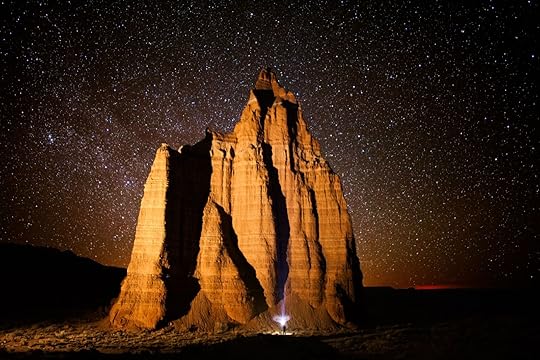
Photo: Quinn Calder/Shutterstock
“If I had to pick a “worst one” of the ones I’ve visited I guess I would go with Capitol Reef. I mean, it’s pretty and it has cool hieroglyphics but you can find those kinds of things at other parks. When you get into Capitol Reef – especially the camping area – you have absolutely no cell service. Not like I want to spend all my time on my phone when I’m camping in a beautiful place but not being able to contact anybody or be contacted by anybody is kind of challenging… I also didn’t feel like there was that much to see and do there like at any other park I have visited. I will, however say that being able to pick fruit from the orchards there was a pretty awesome (and very tasty) experience.” –
Take an art class, will ‘ya…
Photo: William Silver/Shutterstock
“Petroglyph National Monument is pretty underwhelming. There are a bunch of boulders with stick figures behind a subdivision at the edge of Albuquerque.
That being said, it’s hardly a hyped park.” –
Wind Cave is…a cave….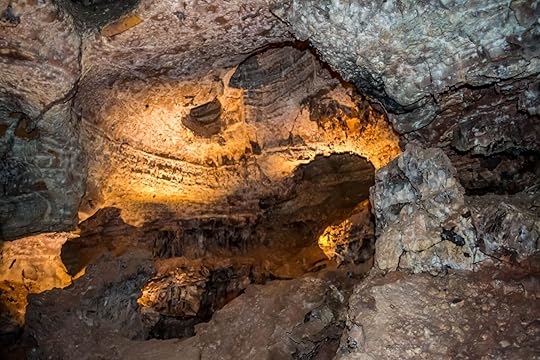
Photo: Cheri Alguire/Shutterstock
“Gateway Arch is the worst by a longshot. It should be a national historical park or monument, at best.
The most disappointing national park I’ve ever been to is Wind Cave. The caverns are nothing at all like Carlsbad or Mammoth. It’s just a cave. The above-ground prairie and forests aren’t bad, but aren’t all that special either.” –Ecoheretic
Another word for a big hole…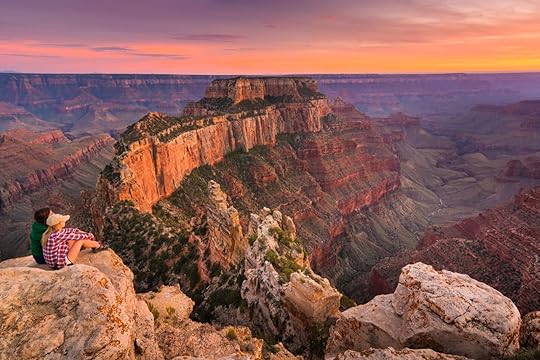
Photo: Pat Tr/Shutterstock
“I feel like I’ll get hate for this, but the Grand Canyon.
It is huge and all, and it makes you feel like an insignificant little speck, but in the end its just a giant crevice in the ground. It was really hyped up for me when I was a kid, for some reason, and seeing was just kind of like “oh?” –
But ultimately, it seems like Redditors think Florida may be home to one of the most overrated national parks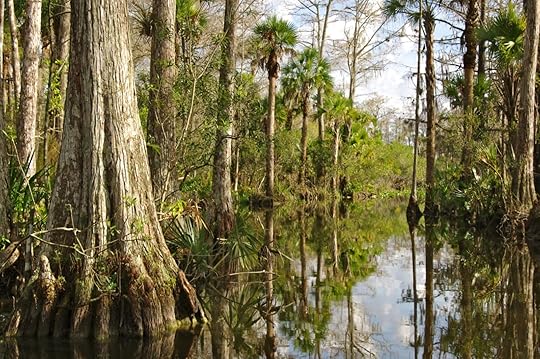
Photo: Anthony Ricci/Shutterstock
Damn those snakes….“Everglades [National Park], no wildlife left, the snakes ate everything, well except mosquitos.” – Link
Lacks aesthetic qualities…“The Everglades are visually boring.” –
Can’t the Everglades catch a break?“Everglades – flat expanse of swampland in all directions. Important to be a national park because of all the wildlife that depends on it, but you can skip visiting.” –
And one Redditor gets straight to the point…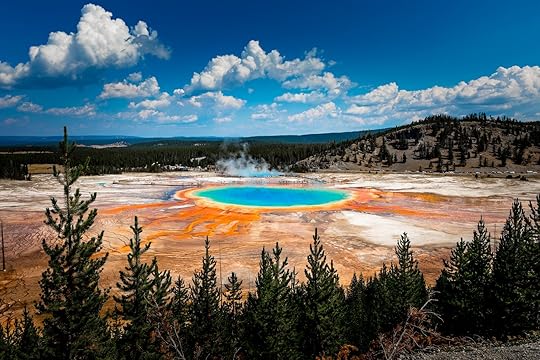
Photo: Anders Riishede/Shutterstock
“Yellowstone, because it’s volcano and may kill us all.” – unknown736382 
Matador Network's Blog
- Matador Network's profile
- 6 followers



